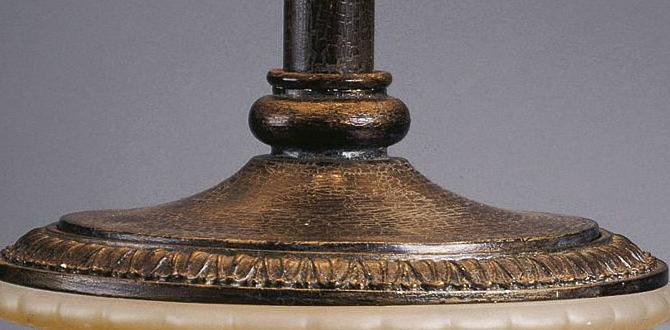Have you ever heard a strange noise coming from your bathroom? You might have a running toilet. A running toilet can waste lots of water. This not only hurts your wallet but also the environment. Imagine letting water flush down the drain for hours without using it!
But what exactly is a running toilet? Simply put, it happens when water keeps flowing into the bowl after a flush. You may hear the sound of water running. It can be annoying, right? Many people don’t realize they have a running toilet until they see a higher water bill.
Did you know that a running toilet can waste up to 200 gallons of water a day? That’s enough water to fill a small bathtub! Understanding what a running toilet is and how to fix it can save you money.
This article will explore the details of a running toilet. You will learn why it happens, how to find it, and the simple steps to fix it. Your bathroom doesn’t have to be a water-wasting zone!
What Is A Running Toilet: Causes And Solutions Explained

What is a Running Toilet?
A running toilet is a toilet that won’t stop flushing. This issue often means water continually trickles into the bowl, wasting water and money. Have you ever wondered why this happens? It usually occurs because of a faulty flapper or a chain issue. A surprising fact is that a running toilet can waste up to 200 gallons of water daily! Understanding this problem helps you save water and keep your bathroom working well.What Is a Running Toilet?
Definition of a running toilet. Common characteristics and sounds.A running toilet happens when water flows continuously from the tank into the bowl. This can waste a lot of water. You might hear a constant sound like a dripping faucet or water swirling. It can be annoying, too! Here are some common signs of a running toilet:
- Water running sound
- Water in the bowl continuously refilling
- Water level in the tank is higher than usual
Fixing a running toilet is important. It helps save water and your money!
What causes a running toilet?
The most common cause is a worn flapper. This part doesn’t seal properly, allowing water to leak. Other reasons might include a faulty fill valve or a float that is set too high.
Common Causes of a Running Toilet
Flapper valve issues. Fill valve malfunctions. Broken float mechanism. Leaky tanktobowl gasket.A running toilet can be annoying and waste water. Let’s look at what causes it. Here are some common issues:
- Flapper valve issues: This valve controls water flow. If it’s stuck or damaged, water keeps running.
- Fill valve malfunctions: If this part breaks, it can let too much water in, causing a flow problem.
- Broken float mechanism: A float that doesn’t work right won’t stop water. This can lead to overflow.
- Leaky tank-to-bowl gasket: If this gasket has a leak, water drips, causing a constant refill.
What causes a toilet to run constantly?
A running toilet often results from small issues that are easy to fix. If you notice a toilet that runs too much, check these parts first! Keeping your toilet healthy saves water and money.
How to Diagnose a Running Toilet
Visual and auditory indicators. Water level assessment. Dye test for leaks.First, look and listen. If your toilet gurgles or hisses, it’s telling you something! Check the water level too. It should be just below the overflow tube. If it’s higher, you’ve found a clue. For a sneaky leak, try the dye test. Drop food coloring in the tank. Wait. If color shows up in the bowl, you’ve got a leak! Here’s a quick view:
| Indicator | What to Look For |
|---|---|
| Visual | Water level too high or low |
| Auditory | Gurgling or hissing sounds |
| Dye Test | Color in bowl means leak! |
Diagnosing a running toilet can be fun! You might even catch your toilet “talking” to you. Remember, a tuned-up toilet saves water and your wallet!
Steps to Fix a Running Toilet
Adjusting or replacing the flapper valve. Replacing the fill valve. Fixing or replacing the float. Addressing tanktobowl gasket leaks.To fix that pesky running toilet, start with the flapper valve. It may need adjusting or replacing. This little rubber flap controls water flow. If it’s sticking, you might hear it humming a tired tune. Next, check the fill valve; it could be just as chatty. If it’s leaking, replacing it is key. Don’t forget the float! It needs to float just right to stop the water. Lastly, inspect the tank-to-bowl gasket for leaks; a little grease can’t solve everything!
| Step | Action |
|---|---|
| 1 | Adjust or replace the flapper valve. |
| 2 | Replace the fill valve. |
| 3 | Fix or replace the float. |
| 4 | Check for tank-to-bowl gasket leaks. |
Remember, a happy toilet makes for a happy home! If you take these steps, your toilet woes will be over. Now, grab your tools and get to work; your toilet will thank you with sweet silence!
Preventative Measures for a Running Toilet
Regular maintenance tips. Signs to watch for over time. Importance of timely repairs.To keep your toilet from running like a marathon runner, regular check-ups are key! Look for signs like water hissing or unexpected puddles. These can mean trouble is brewing. Early fixes can save you from a surprise water bill—nobody wants that! You should also always check the flapper for damage. A bit of TLC goes a long way!
| Signs to Watch For | Maintenance Tips | Repair Importance |
|---|---|---|
| Hissing Noises | Check flapper and chain regularly. | Fixing leaks means saving water! |
| Puddles Around Base | Inspect seals and connections. | Quick repairs prevent bigger issues. |
| Constant Running | Monitor the float height. | Timely fixes keep costs down. |
When to Call a Professional Plumber
Complex problems that require expertise. Equipment and tools needed for serious repairs. Cost considerations for hiring a plumber.Some toilet troubles are tricky enough to need a pro. If your toilet runs like it’s auditioning for a marathon, it might be time to call a plumber. They have special tools and gadgets that can fix serious issues. Plus, they know how to avoid any DIY disasters, like flooding your bathroom and giving your cat a bathing session. Cost is another thing to think about. Hiring a plumber might seem pricey, but it can save you from bigger expenses down the line.
| Complex Issues | Tools Needed | Cost Considerations |
|---|---|---|
| Clogged pipes | Drain snake | $100-$300 per visit |
| Leaky tanks | Wrenches | Parts may add extra cost |
| Flushing problems | Test gauge | May save money long-term |
Cost Implications of a Running Toilet
Water usage and bill impact. Estimated repair costs. Longterm savings from prompt repairs.A running toilet can waste a lot of water. This means higher water bills each month. If a toilet runs for 24 hours, it can waste up to 200 gallons! That’s a big difference. Repair costs may be small if fixed soon, often around $50 to $100. However, waiting too long can lead to bigger problems and costs. Quick repairs can save money in the long run. It’s best to fix it right away and save water and money!
How does a running toilet affect my bills?
A running toilet can raise your water bill by wasting too much water each month.
Cost Overview:
- Water usage increase
- Repair costs: $50 – $100
- Long term savings with quick fixes
Conclusion
In summary, a running toilet is one that keeps filling with water. This can waste water and increase bills. You can often fix it by adjusting parts inside the tank. If you want to learn more, check out repair guides or ask a plumber. Taking care of your toilet helps save water and money!FAQs
What Are The Common Signs That Indicate A Toilet Is Running Continuously?You can tell a toilet is running all the time if you hear a constant sound of water. You might also see water trickling into the bowl. If the tank keeps filling up, that’s another sign. Lastly, if you notice a higher water bill, it could mean your toilet is leaking.
What Are The Typical Causes Of A Running Toilet, And How Can They Be Fixed?A running toilet usually has a few common causes. First, the flapper might be worn out, letting water leak. We can fix this by replacing it. Second, the fill valve could be broken, which also needs a replacement. Finally, the float might be too low. We can adjust it so the toilet stops running.
How Can A Running Toilet Affect Water Bills, And What Is The Potential Cost Of Neglected Repairs?A running toilet wastes a lot of water. This can make your water bill much higher. If you don’t fix it, you could lose hundreds of dollars over time. It’s best to repair it quickly to save money and help the planet.
Are There Preventive Measures To Avoid A Running Toilet In The Future?Yes, there are ways to prevent a running toilet. You can check the flapper inside the tank. If it’s worn out, replace it. Make sure the float ball is not stuck. We should also avoid flushing anything but toilet paper. Regularly checking these parts helps keep the toilet working well.
When Should A Homeowner Consider Calling A Plumber For A Running Toilet Issue Instead Of Attempting A Diy Repair?You should call a plumber if your toilet keeps running after a DIY fix. If you can’t find what’s wrong, a plumber can help. They know how to fix tricky problems that are hard to see. Also, if water keeps overflowing or you hear strange sounds, it’s time to get expert help. Don’t wait too long; it can waste a lot of water!








